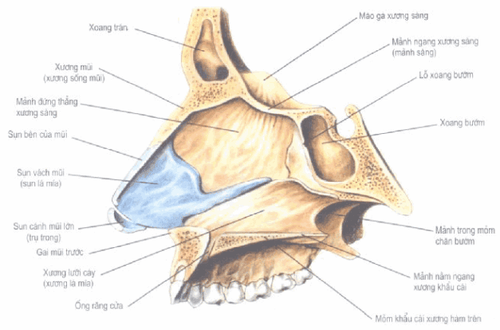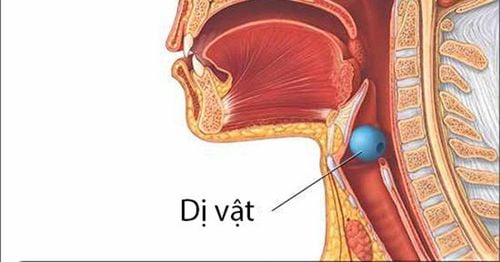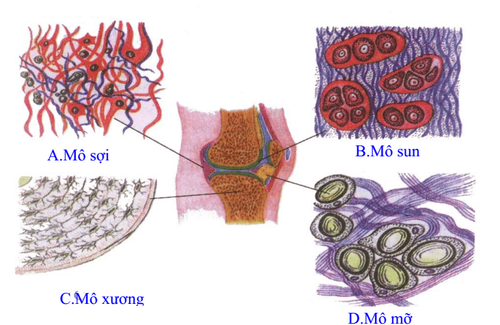This is an automatically translated article.
The article was consulted with Specialist Doctor II Nguyen Van Thai - Ear - Nose - Throat Doctor - Department of Otolaryngology and Head and Neck Surgery - Vinmec Danang International Hospital.The nose is a part of the respiratory system that is mainly responsible for carrying air, cleaning and heating the air before it enters the lungs. The shape of the nose is composed of the nasal bones, nasal cartilage, septum, and nasal cavities.
1. Structure of the nose
Nose is one of the organs of the respiratory system, the structure of the nose includes the following components:1.1 Outer nose Shape and structure: Outer nose convex in the middle of the face, shaped like a 3-sided pyramid, but the smallest face are 2 nostrils anterior, 2 lateral faces located on 2 sides of the nose. Above is the base of the nose, in between the eyes, a vertical ridge continues from the base of the nose down to the bridge of the nose and ends at the top of the nose. Behind the bridge of the nose is the nasal septum, on both sides are the wings of the nose, between the nasal septum and the wings of the nose are 2 nostrils in front. Between the wings of the nose and cheeks is the nasolabial fold. The outer nose is composed of a nasal skeleton and cartilage, surrounded by muscle and skin, and the inner side is lined by the nasal mucosa. 1.2 Inner nose The inner nose consists of 2 nasal passages, located just below the base of the skull and above the hard palate, the two foci are separated by the nasal septum, communicating with the outside through the anterior nostril and with the posterior pharynx through the nostril. after.
1.2.1 Nasal vestibule As the first part of the nasal cavity, the nasal vestibule is slightly enlarged, corresponding to the large alar cartilage. Most of the nasal vestibule is lined with skin and has many hairs and mucous glands to block dust.
1.2.2 Posterior nostrils At the back of the nasal cavity, there are 2 holes separated by the nasal septum, which is the place of communication between the nasal cavity and the pharynx, which has the function of bringing air into the nasopharynx and lower respiratory tract.
1.2.3 Nasal septum The nasal septum or inner nasal wall has two parts: cartilage and bone.
Cartilage: In front, it includes the medial pillar of the large alar cartilage and the nasal septum, the nasal cane cartilage. Skeletal part: Posterior, formed by vertical fragments of the ethmoid bone and the cane scapula.

1.2.5 Base of the nasal cavity The base of the nasal cavity is the hard palate, which separates the nasal cavity and the oral cavity.
1.2.6 External nasal wall Formed by maxillary bone, nasal bone, lacrimal bone, palatine lamina, ethmoid labyrinth, and pterygium process. There are 3-4 curvilinear bone fragments, protruding into the nasal cavity called the nasal curvatures (including the lower nasal curvilinear, middle nasopharynx, and upper nasopharynx) and sometimes additionally the upper nasopharynx. The nasal curvilinear bones form with the outer wall of the nasal cavity the corresponding nasal recesses. These nasal passages connect with the nasal sinuses, helping to drain fluid from the sinuses.
1.2.7 Nasal mucosa The inner lining of the nasal cavity is a stratified columnar epithelium with many transitional hairs, continuous and similar in structure to the lining of the sinuses and pharynx. The nasal mucosa is divided into two areas: the olfactory zone and the respiratory region: the olfactory region, near the ceiling of the nasal cavity, the mucosa has many olfactory nerve endings, helping to perceive different odors.
Respiratory area: Mostly below the nasal cavity. The mucosa has many blood vessels, mucous glands and lymphatic organizations that have the function of heating, humidifying the air, filtering out dust and disinfecting the air before the air enters the lungs.
1.3 Paranasal sinuses There are 4 pairs: maxillary sinus, frontal sinus, ethmoid sinus and sphenoid sinus. Normally, the sinuses are empty and airy, containing circulating air that is responsible for sound resonance, moistening the nasal mucosa, heating the air, balancing and lightening the facial bone mass.
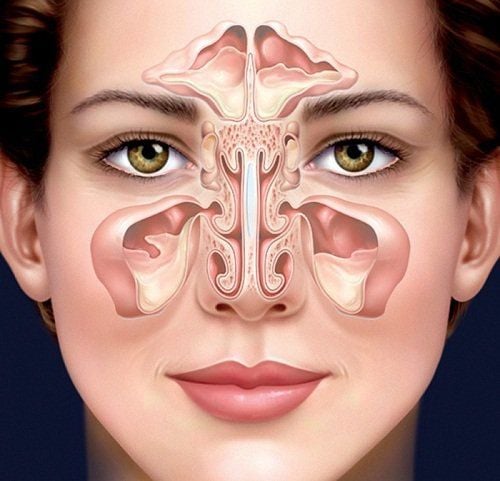
2. Nasal bone structure
2.1 Nasal bone The nasal bone begins at about mid-eyebrow and ends with a serrated nasolabial groove. The nasal bones are usually elongated, small, and can vary in size and shape in individual individuals. The nasal bone is usually divided into two symmetrical parts in the middle of the face. The two nasal bones are connected by a suture between the nose and form the bridge of the nose.The function of the nasal bones is to prevent the outer nose from collapsing and to ensure the passage of air through the nasal cavity.
The inner nasal bone includes:
The ethmoid bone and the cane leaf bone: It is a component of the nasal septum. Nasal, frontal, ethmoid, and sphenoid bones: Form the ceiling of the nasal cavity. Helps separate the nose from the base of the skull. The hard palate separates the nose from the oral cavity. Maxillary bone, nasal bone, lacrimal bone, palatine lamina, and sphenoid process: Helps form the outer wall of the nose. Nasal curl bone: Combined with the outer wall of the nose to form the nasal passages, including the anterior, middle and posterior nasal passages. Helps circulate fluid from the paranasal sinuses. 2.2 Nasal Cartilage Nasal cartilage is composed of collagen, protein, water and other components. Nasal cartilage includes:
Small nasal cartilage connects the large nasal bones with the lateral nasal cartilage. Sun Alar forms the structure of the nostrils. The lateral nasal cartilage has a triangular structure and is located below the nasal bone. The septal cartilage, also known as the quadrangular cartilage, connects the nasal bones with the lateral cartilage. Vomeronasal cartilage, also known as Jacobson's cartilage, connects the septum and thin bones that separate the 2 nostrils. The main function of cartilage is to help connect bones and cartilage together, to support the nose, to support the nasal bones to prevent the nose from collapsing, to perform the ventilation function.
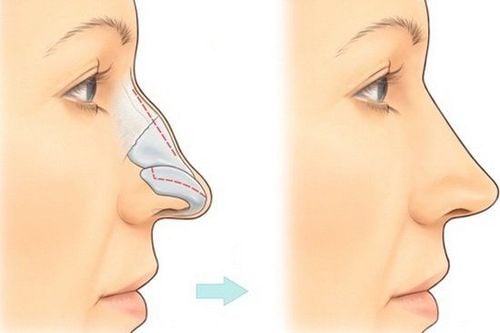
3. Function of the nose
The structure of the nose helps the nose to carry out important functions such as:2.1 Respiratory The nose is the first organ of the upper respiratory tract. Therefore the main function of the nose is to supply and regulate the air taken into the rest of the respiratory system. The nose helps to filter the air, removing dust and other particles from the air by the nose hairs before entering the lungs.
The structures inside the nasal cavity form a system that humidifies and warms the air, filters the air, and maintains a healthy environment inside the lungs.
2.2 Nose The nose plays an important role in the olfactory system. The nasal mucosa in the upper chamber contains an olfactory gland or glands that assist in the sense of smell. This helps the body to channel the air and bring odors to the olfactory area. Part of the air entering the nose will pass through the part with smell receptors, from there to the brain and help us perceive odors.
2.3 Aids in the formation of each person's unique sound The sinuses in the nose help to resonate and create a difference in the sound emitted by the human lips.
Some people can produce speech using air from the nose, called nasal sounds. To make sounds from the nose, you need to lower the roof of your mouth to let out the vowels and consonants by allowing air to escape from the mouth and nose.
Nose is an important part of the respiratory system, thanks to the bone and cartilage system of the nose, the nose does not collapse to help circulate air. A certain factor that damages the cartilage system will affect the air circulation in the nose. Therefore, if your nose has abnormal symptoms, you should soon go to medical facilities for timely examination and treatment.
Please dial HOTLINE for more information or register for an appointment HERE. Download MyVinmec app to make appointments faster and to manage your bookings easily.





